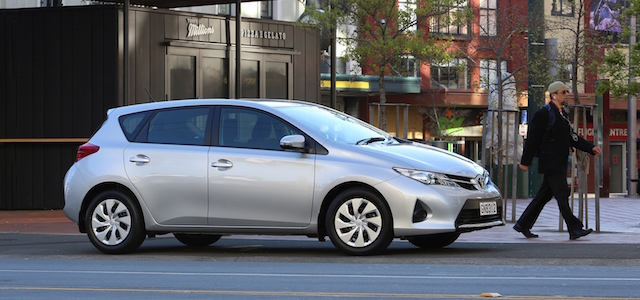
Five years ago, the Motor Industry Association (MIA) lumped together registrations of SUVs – the segments compact, medium, large, luxury didn’t exist in its sales data.
Example: At the end of November 2013, the MIA had registered 28,045 SUVs. End of story. An educated guess might show most were medium.
What doesn’t need conjecture, however, is that SUV sales accounted for 27 per cent of the 104,408 new vehicles on the MIA books after 11 months of 2013.
Things have changed. Sustained new vehicle sales growth since 2013 has brought more detailed sales information, both from the MIA and its data donor, the NZ Transport Agency.
Example: After 11 months of 2017, the MIA had registered 58,191 SUVs. No need now to guess where they went – the MIA breakdown is thus: medium 24,462, large 16,945, compact 15,928, luxury 856.
Sales of SUVs after 11 months of 2017 represented 40 per cent of the overall 148,335 vehicles, the latter already a record total for a calendar year, and there’s still three weeks of sales to go.
In five years, January-November new vehicle registrations have grown by 42 per cent – 104,408 in 2013 to 148,335 in 2017. SUVs have grown by 107 per cent – 28,045 to 58,191.
Monthly January-November SUV sales in 2013 averaged 2549 units; this year they’ve averaged 5290.
Ute sales in 2013 weren’t catergorised either. MIA data shows there were 19,510 ‘pick-up/cab chassis’ vehicles registered in 11 months back then.
This year 34,422 utes were on the MIA books at the end of last month – 20,690 4x4s and 13,732 4x2s. Ute sales have therefore grown 77 per cent in five years.
Record monthly numbers have regularly been rewritten in 2017. Last month, for example, was the strongest November on record, with 14,594 registrations. October was the strongest October, too. September was the strongest September.
Overall sales to the end of November were up 9.5 per cent on the same period last year. Passenger cars sales were up 6.2 per cent and commercials 17 per cent.
Said MIA chief executive David Crawford: “With one month to go the question is whether the total for the year will break through the 160,000 mark for the first time. The 150,000 total mark for a calendar year is no longer a question.”
Following are lists of the top 10 passenger and commercial vehicles after 11 months of 2013 and 2017.
Passenger January-November 2013
Toyota Corolla – 5281
Suzuki Swift – 2746
Toyota RAV4 – 2518
Holden Commodore – 2397
Toyota Yaris – 2235
Holden Captiva – 2036
Mazda CX-5 – 1988
Holden Cruze – 1947
Hyundai Santa Fe – 1844
Mazda3 – 1535
Passenger January-November 2017
Toyota Corolla – 6681
Toyota RAV4 – 4116
Kia Sportage – 3396
Mazda CX-5 – 3009
Mitsubishi Outlander – 2683
Toyota Highlander – 2543
Suzuki Swift – 2231
Mitsubishi ASX – 2154
Hyundai Tucson – 2107
Holden Commodore – 2059
Commercial January-November 2013
Toyota Hilux – 4583
Ford Ranger – 4352
Nissan Navara – 2557
Holden Colorado – 2302
Toyota Hiace – 2138
Mitsubishi Triton – 1208
Mazda BT-50 – 1189
Isuzu D-Max – 758
Volkswagen Amarok – 756
Mitsubishi L300 – 703
Commercial January-November 2017
Ford Ranger – 8824
Toyota Hilux – 7664
Holden Colorado – 4052
Mitsubishi Triton – 3786
Nissan Navara – 2865
Toyota Hiace – 2824
Isuzu D-Max – 2355
Mazda BT-50 – 2073
Fiat Ducato – 984
Ford Transit – 871
So, what do the registration figures show?
Passenger: There were four SUVs among the top 10 in 2013; there were seven after 11 months of 2017. The Holden Commodore might have slipped six places since 2013, but it’s still in the top 10, testiment to its ANZAC appeal. Mitsubishi didn’t have a car in the top 10 in 2013, now it has two. Kia didn’t have a top 10 entrant back then, either. Its Sportage is now a winner, the most popular car among private buyers. Tucson has replaced Santa Fe as Hyundai’s best seller.
Commercial: Ranger sales have jumped 102 per cent, Hilux 67 per cent, Colorado 76 per cent. Triton and D-Max are the big movers over five years, Triton up 213 and D-Max 211 per cent. VW Amarok and Mitsubishi L300 have been replaced by the Ducato and Transit.
